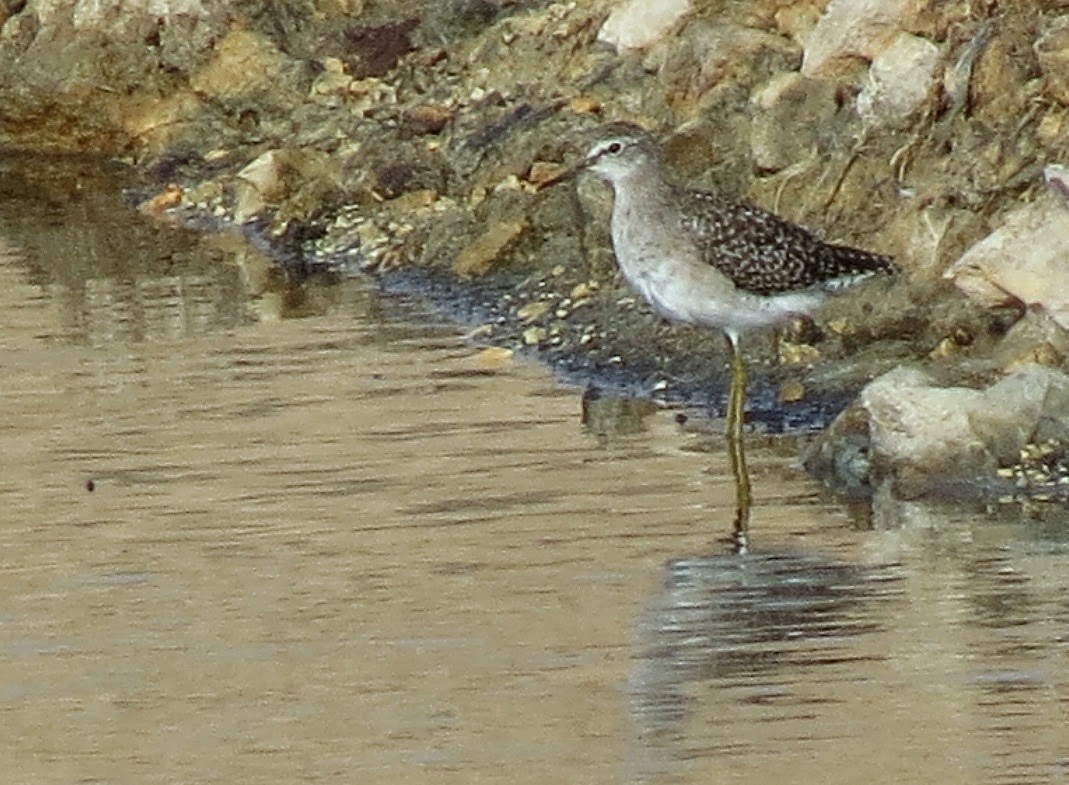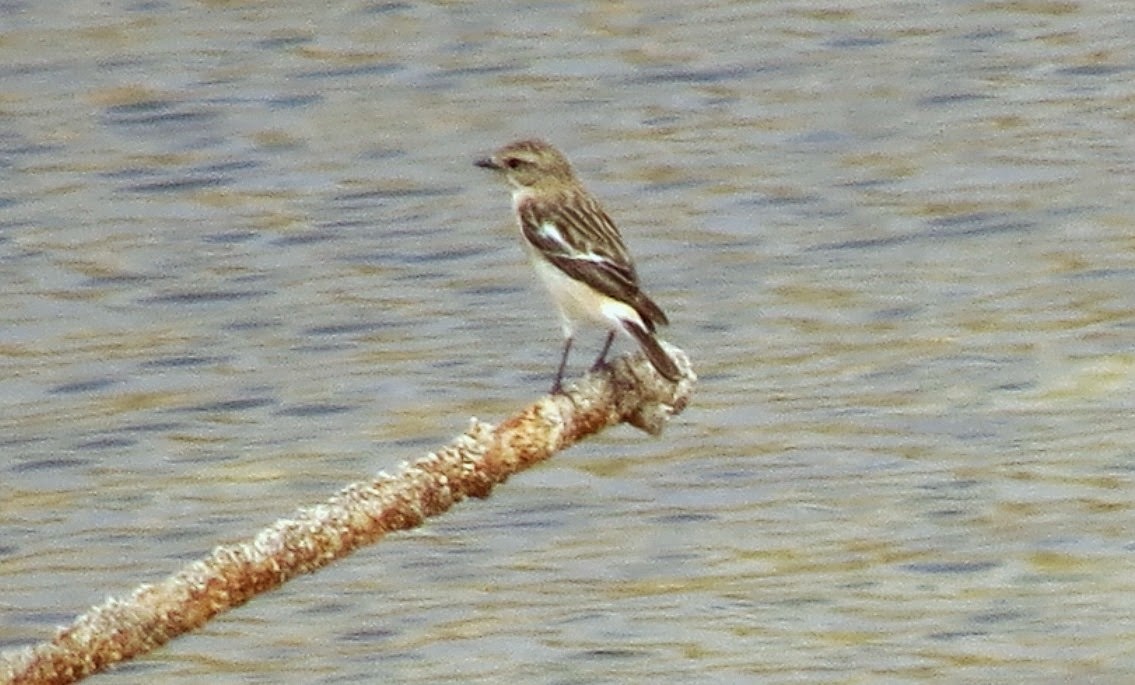I spent some time with him at the lake before wandering off into the hinterland to carry on with more general birding.
black winged stilt
The first thing I noticed was that the water level is still lowering. It has been for over a year now since the waste water from the industrial city has been diverted. It used to flow into a near-by field and seeped into the lake through rocks coming out as clean water into the lake.
little grebe
At the moment, only the moorhen population has deserted the lake. Bernard counted 140 little grebe who so far have stayed on.
the lake
coot, black winged stilt, little ringed plover
little ringed plover, black winged stilt, ruff
The spur winged plover joined them as soon as we arrived even with caution.
spur winged plover
In the pools at our end of the lakes, two species were a little braver. These were wood sandpiper and common redshank.
wood sandpiper
If you look at the main regional guide, you will see that it does not show common redshank in central Saudi Arabia. The map shows it closer to the coast. However, this is not the first time I have seen it at the lake.
common redshank
After a while, some of the common sandpiper and green sandpiper drifted back across to us.
common sandpiper
A few other birds were seen over the water. A Siberian stonechat was resting on a metal rod. Form time to time, barn swallow drifted over.
Siberian stonechat
An other bird was a marsh harrier which was immediately mobbed by black winged stilt and eventually forced off. the little grebe didn't react at all. We surmise their defence would have been to dive if necessary.
Marsh harrier
While Bernard remained watching the little grebe, I moved off into the adjoining area. I'll blog about what I saw there next.












No comments:
Post a Comment